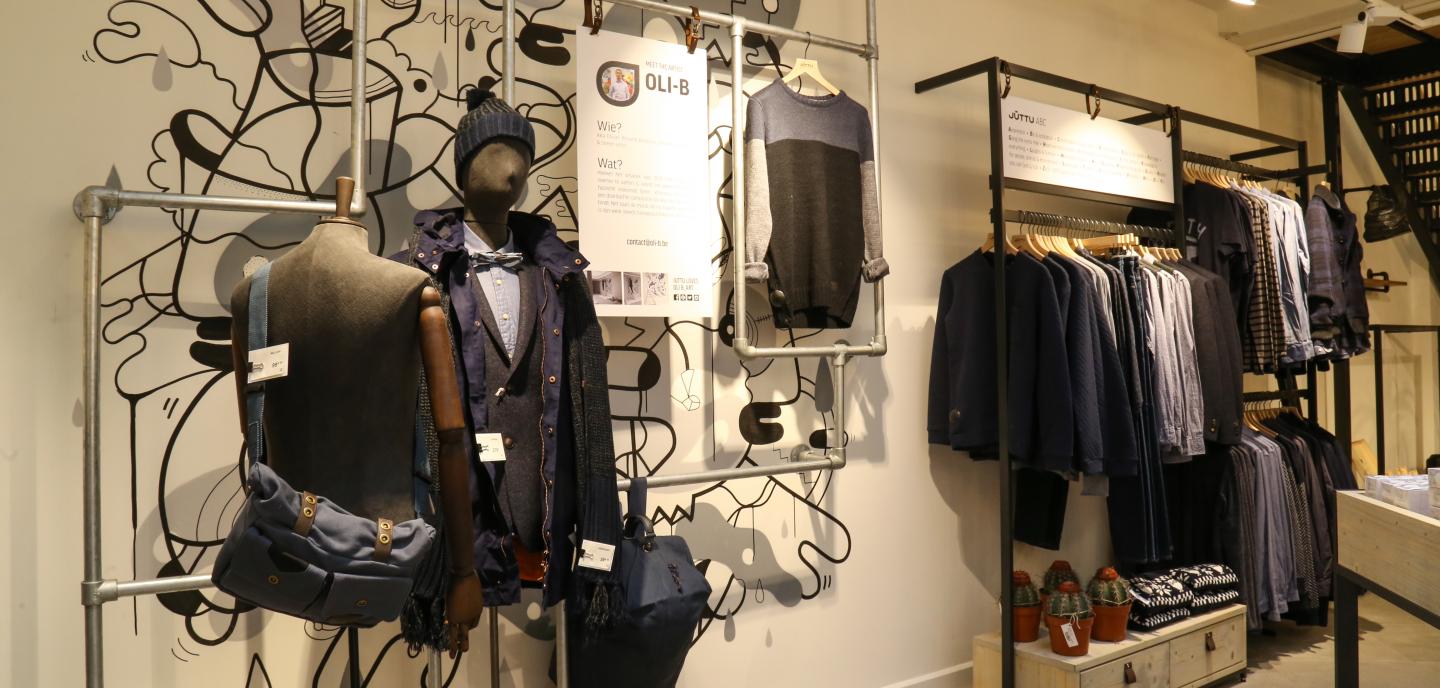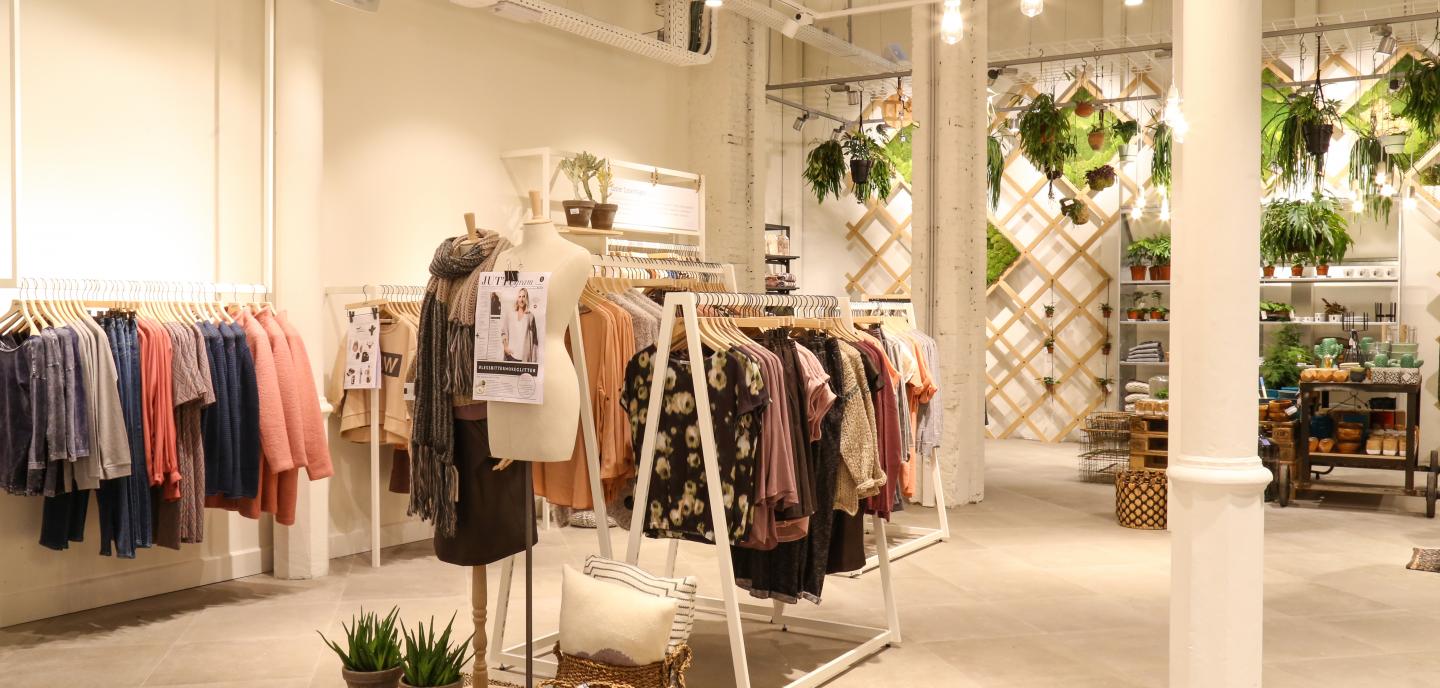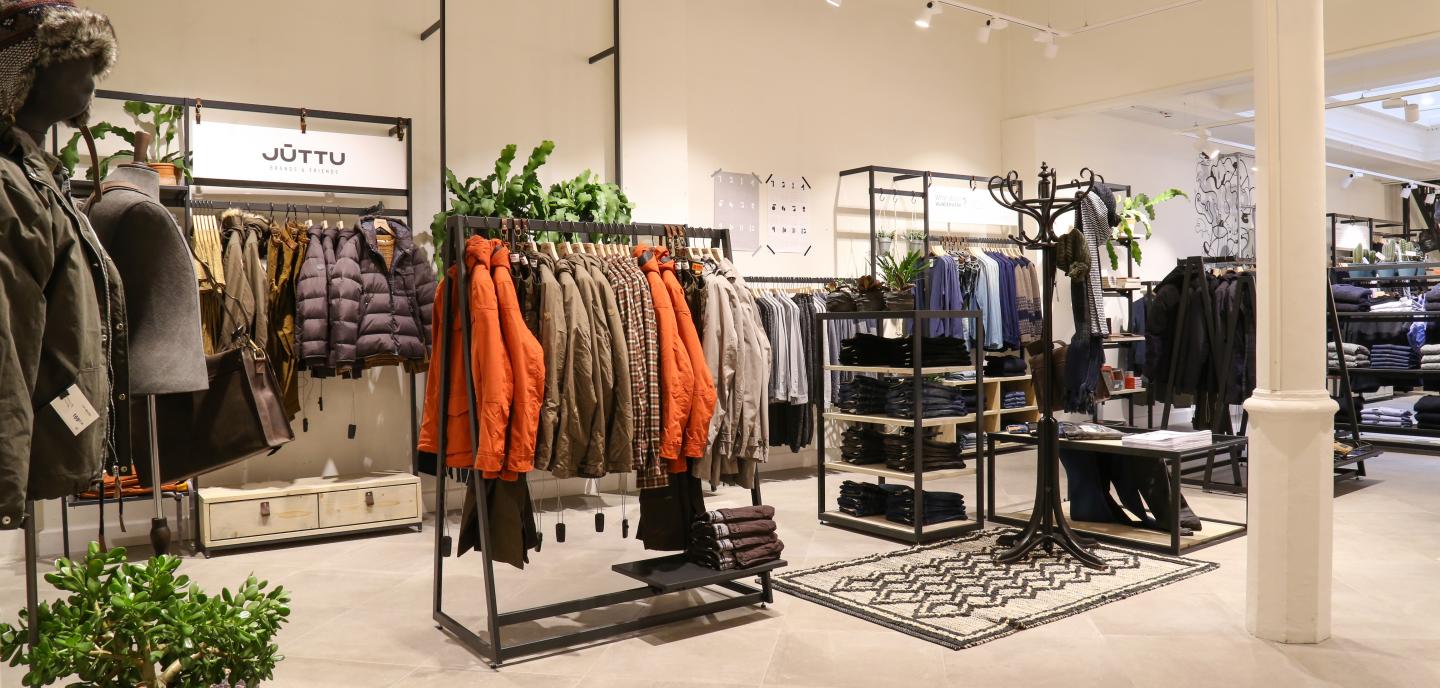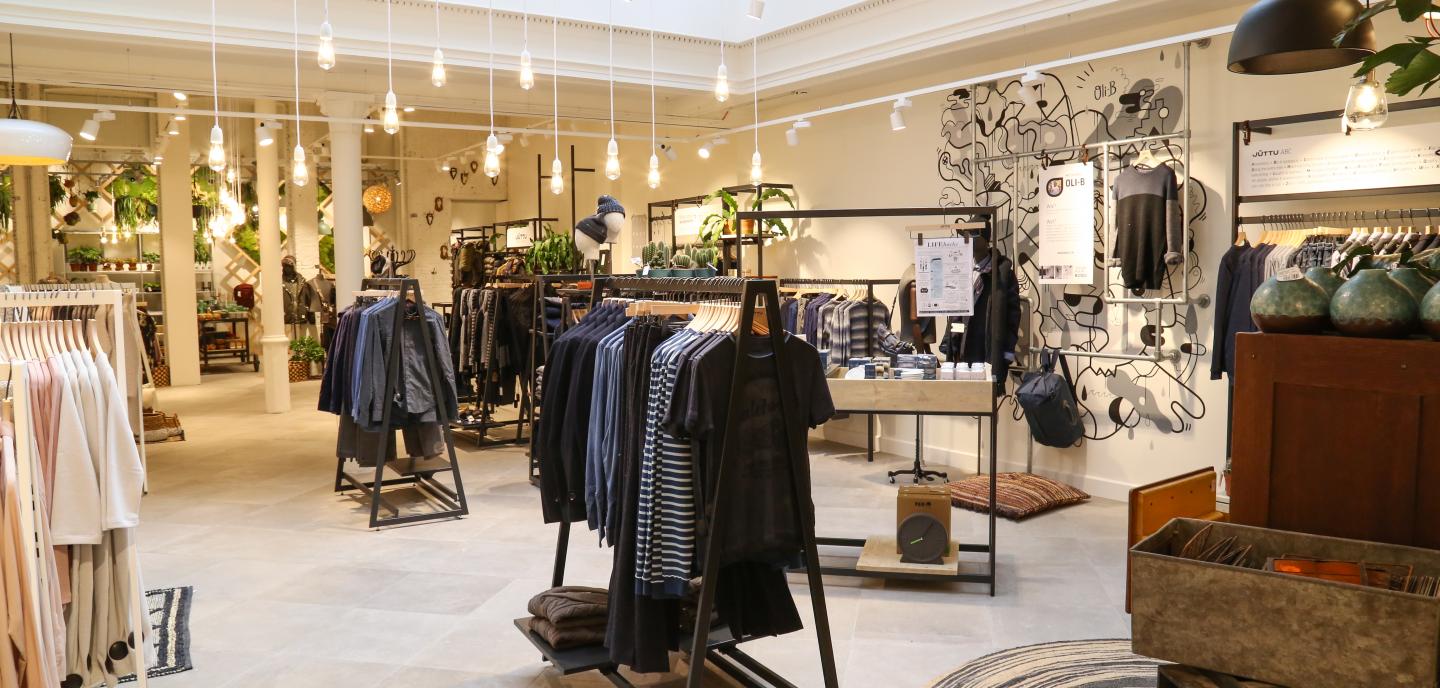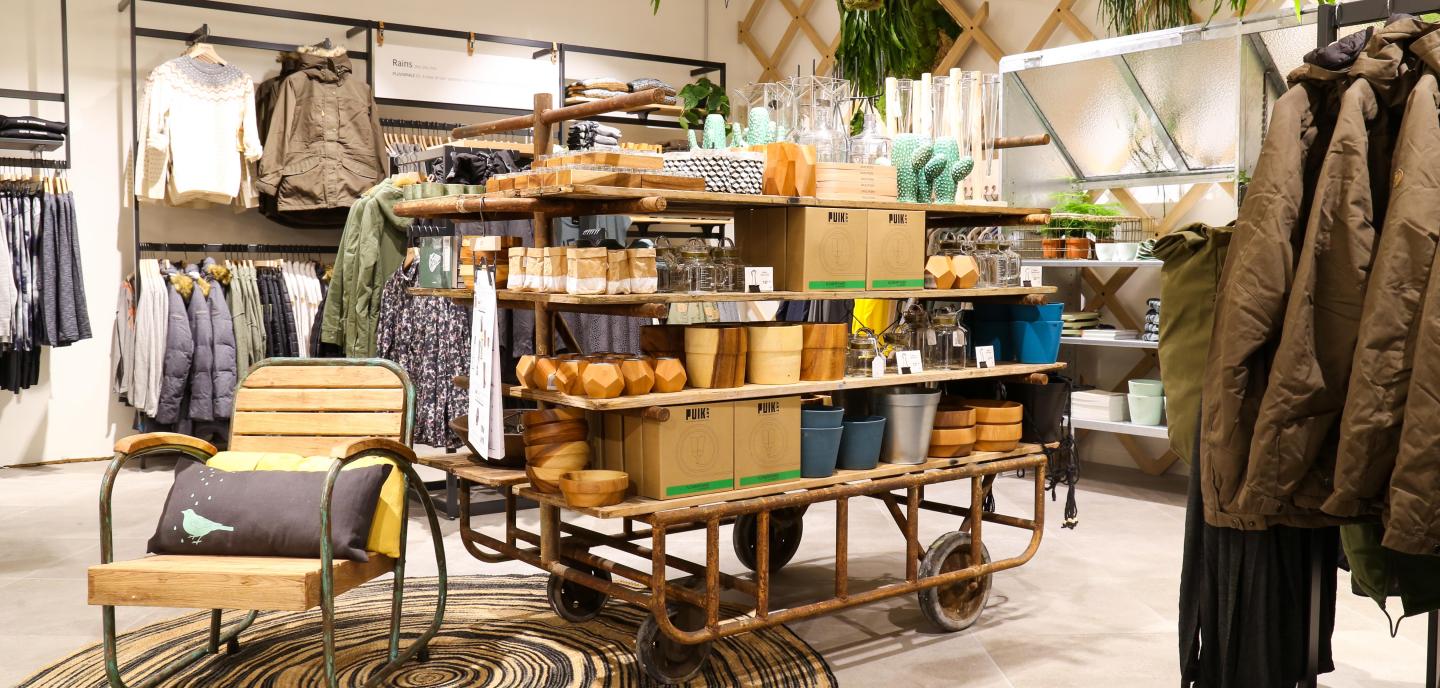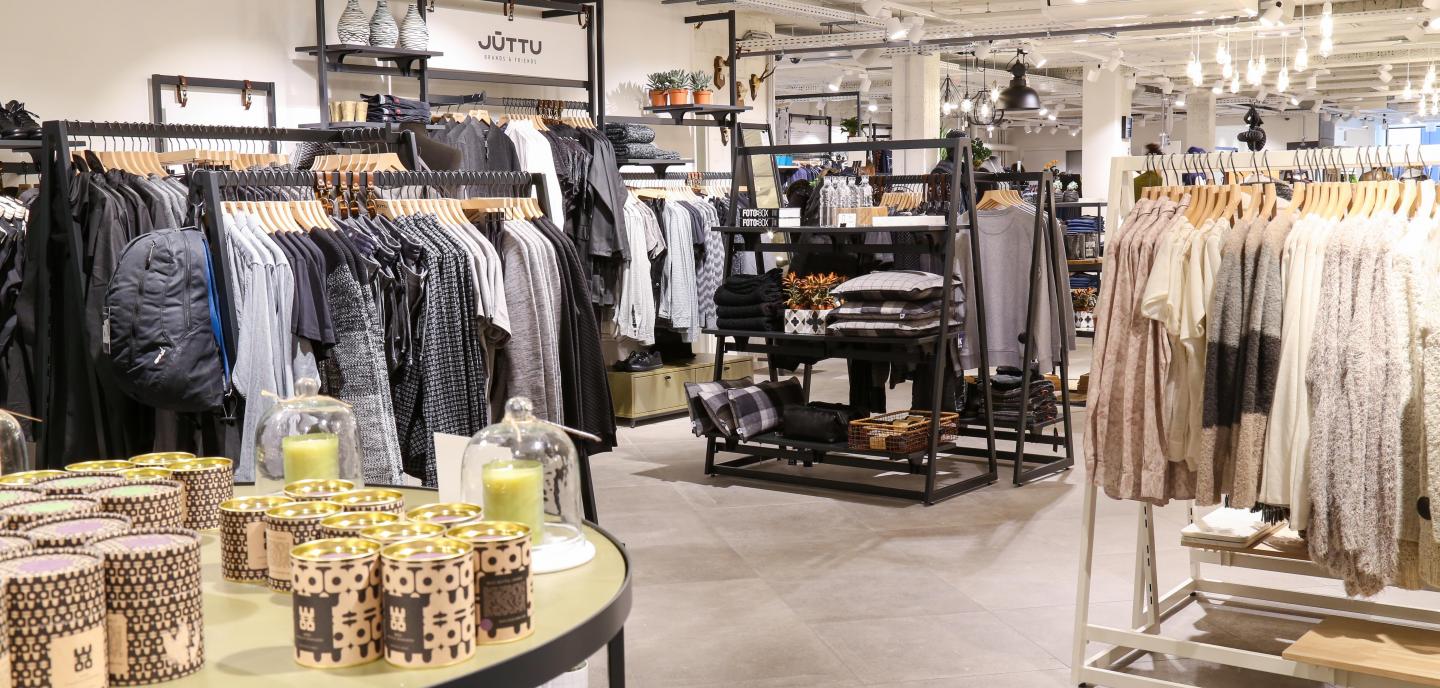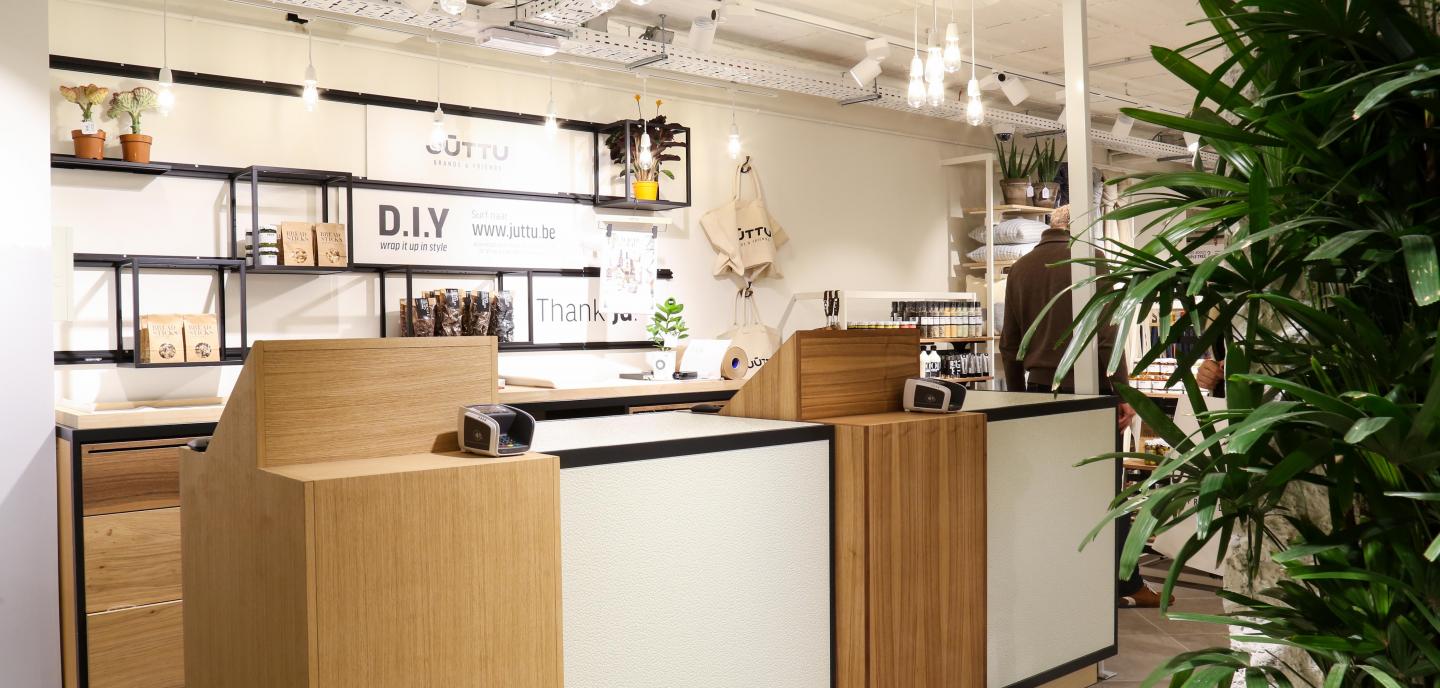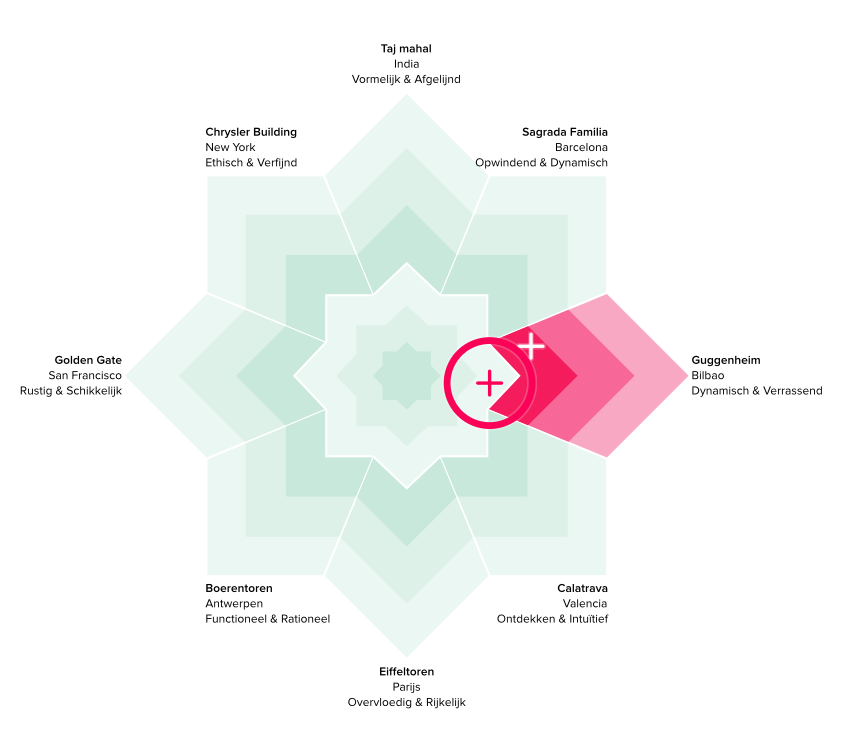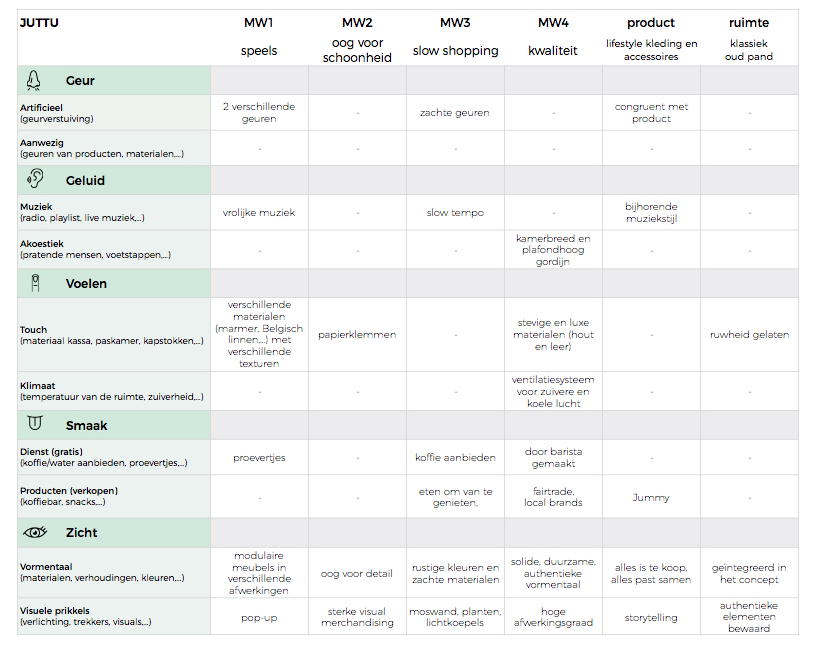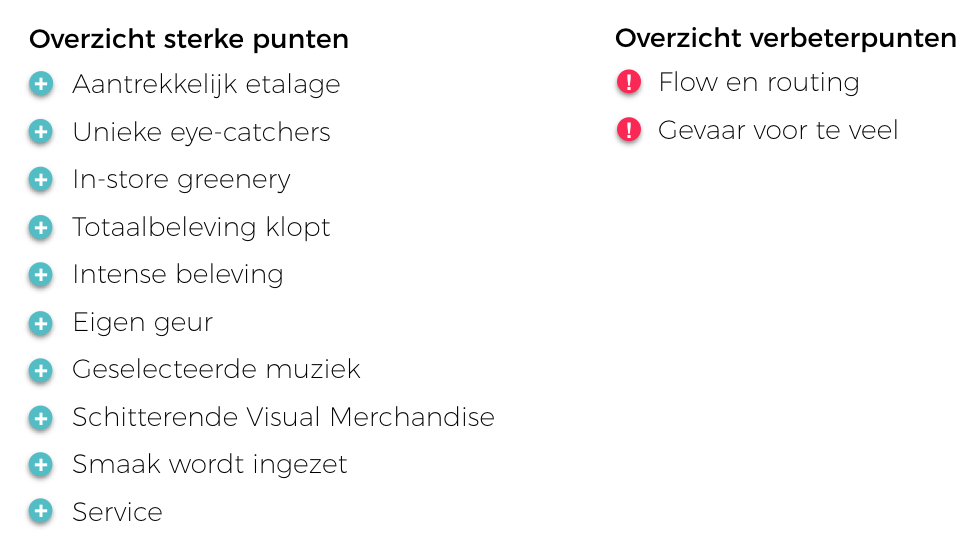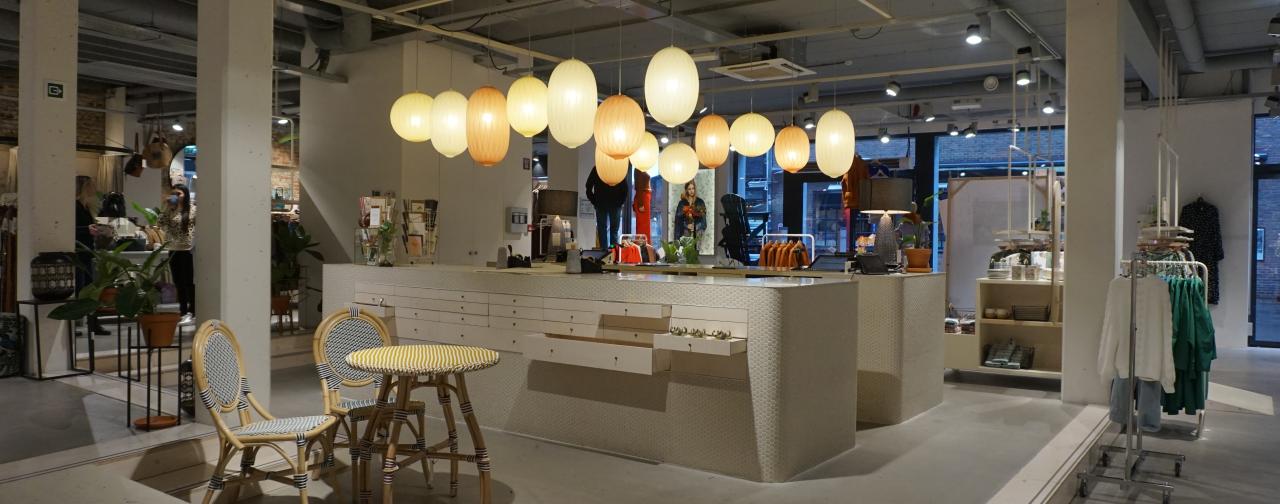ETALAGE - The store windows communicate the style of the Juttu story: the consumer immediately sees a varied range of products and the attractiveness with which the products are displayed makes the consumer want to discover the store (Oh & Petrie, 2012). The store windows have 'stopping power' which allows the consumer to take the time to look and enter. The products are presented in an original but relevant way. The images, posters, the Juttugram and the references to the designers fully fit the concept (Lange, Rosengren, & Blom, 2016) and are deliberately and thoughtfully placed. This display window makes the consumer curious and responds to the shopping experience by radiating a playfulness and by bringing refinement (Kennedy & Parsons, 2015).
EYECATCHERS - eye-catchers attract attention and ensure that the consumer is led through the store (Chan & Chan, 2007).
GREEN POLICY - The moss wall at the back of the store is a real eye-catcher and provides a resting point in the store. In a complex (store) environment (i.e. an environment where a lot is happening, there is a lot to discover, with a varied range of products and a stimulating design) the customer gets a lot of information to process. The integration of green elements and natural materials such as wood in the space where the customer gets many stimuli, provides a stronger sense of well-being and also has a stress-reducing effect (Brengman, Willems, & Joye, 2012). These positive feelings, in turn, ensure that the client may be more open to the environment and will show a faster approach behavior than when he is in the complex space without rest (such as green elements).
TOTAL POLICY - The colors used (shades of white and green) for the walls, ceilings and walls are completely in keeping with Juttu's visual identity (Labrecque & Milne, 2012) and radiate calm and naturalness. Because both the ceilings below and the walls are painted in white tones, it gives the building an even more spacious look and provides breathing space (Oberfeld, Hecht, & Gamer, 2010). The natural daylight that enters through the dome at the back of the store emphasizes the open, spacious feeling. At Juttu, the lighting is clearly used as an extra atmospheric feature (Custers, Ijsselsteijn, de Kruiff, 2010) and does not merely serve to illuminate the products. The choice of materials for the presentation furniture is in line with the atmosphere and cosiness that Juttu wants to radiate. Several pieces of furniture were left rough and furniture in weathered wood was also used, which is perceived as warmer than if materials with a smooth surface had been chosen (Wastiels, Schifferstein, Heylighen, & Wouters, 2012).
By appealing to each of the senses in a well-considered way and doing so in a dosed way, the shopping experience is more intense and strengthens the brand and the Juttu story (Schifferstein, 2011).
Scent - In order to enhance the different atmospheres in the store, a specially developed fragrance (Klara, 2012) is spread in three places. When a scent is congruent with the products sold or goes hand in hand with the atmosphere of the store, customers will evaluate both the products and the store more positively (Spangenberg, Sprott, Grohmann, & Tracy, 2006). When scents are perceived as warm by customers, this can also lead to a higher buying intention and ultimately increased buying behavior (Madzharov, Block, & Morrin, 2015).
MUSIC - Juttu uses a self-composed playlist so that the music style also fits within the picture: soft, easy listening music at a pleasant volume that positively enhances the atmosphere (Morin, Dubé, & Chebat, 2007).
VISUAL MERCHANDISE - This is used efficiently and effectively as a means of communication and thus increases the positive evaluation of not only the products but the entire store (Cavazza & Gabrielli, 2014).
SMAAK - The tastings contribute to a pleasant shopping experience and contribute to sales (Biswas, Labrecque, Lehmann, & Markos, 2014).
SERVICE - Juttu starts from a customer-focused approach and that bears fruit (Hwang & Chi, 2005). The personal touch of the staff on entering the store already indicates that the visitor is welcome and can quietly explore the store at their own pace. The staff has a proactive attitude, without being intrusive, and in several places in the store the visitor can be helped, if desired. The sincere friendliness, helpfulness and product knowledge of the staff make the consumer feel safe and have a positive shopping experience (Kulkarni, 2013).

